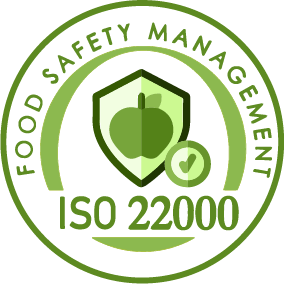Call Us: +201000223355
ISO 22000: 2018
ISO 22000:2018 specifies the requirements for a food safety management system. It integrates the principles of Hazard Analysis and Critical Control Points (HACCP) and aligns with the high-level structure used in other ISO management system standards, facilitating easier integration with systems like ISO 9001. This standard is applicable to all organizations within the food chain, regardless of size or complexity.

What is ISO 22000:2018?
ISO 22000:2018 specifies the requirements for a food safety management system. It integrates the principles of Hazard Analysis and Critical Control Points (HACCP) and aligns with the high-level structure used in other ISO management system standards, facilitating easier integration with systems like ISO 9001. This standard is applicable to all organizations within the food chain, regardless of size or complexity.
Key Features of ISO 22000:2018:
-
High-Level Structure: The standard follows the Annex SL framework, which allows seamless integration with other ISO management system standards, ensuring consistency and efficiency in implementation.
-
Risk-Based Thinking: ISO 22000:2018 incorporates a risk-based approach at both the operational and organizational levels, emphasizing the identification, assessment, and control of food safety hazards.
-
Leadership and Commitment: The standard underscores the importance of top management involvement in the FSMS, ensuring that leadership is committed to food safety and allocates the necessary resources.
-
Communication: Effective communication throughout the food chain is critical. The standard mandates transparent and open communication with all stakeholders to manage food safety risks effectively.
-
Planning: Organizations must set food safety objectives and establish plans to achieve these objectives, ensuring they align with the strategic direction of the organization.
-
Support: Adequate resources, competence, awareness, and communication are required to support the implementation and maintenance of the FSMS.
-
Operational Control: The standard requires the implementation of operational controls, including prerequisite programs (PRPs), operational prerequisite programs (OPRPs), and HACCP plans, to manage food safety hazards effectively.
-
Performance Evaluation: Monitoring, measuring, analyzing, and evaluating the FSMS’s performance are essential for ensuring its effectiveness. This includes conducting internal audits and management reviews.
-
Improvement: Continual improvement is a key component of ISO 22000:2018, requiring organizations to take actions to enhance their FSMS and achieve better food safety outcomes.
Benefits of ISO 22000:2018 Certification:
- Enhanced Food Safety: A robust FSMS helps prevent food safety hazards and ensures the production of safe food products.
- Regulatory Compliance: Assists organizations in meeting national and international food safety regulations, reducing the risk of legal issues.
- Market Access: Certification can be a prerequisite for entering certain markets and is often required by major retailers and food manufacturers.
- Consumer Confidence: Demonstrates a commitment to food safety, enhancing trust and confidence among consumers and stakeholders.
- Operational Efficiency: Streamlined processes and improved resource management lead to increased operational efficiency and reduced costs.
- Risk Management: Proactively identifying and controlling food safety risks helps prevent incidents and protect brand reputation.
ISO 22000:2018 is an essential standard for any organization involved in the food industry. It provides a comprehensive framework for managing food safety risks and ensuring the safety and quality of food products. Achieving ISO 22000:2018 certification demonstrates a commitment to food safety, enhances consumer confidence, and provides a competitive edge in the market. By adopting ISO 22000:2018, organizations can ensure the safety and quality of their food products, contributing to the overall health and well-being of consumers.